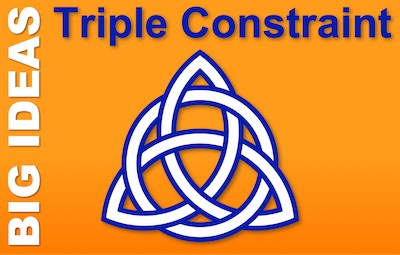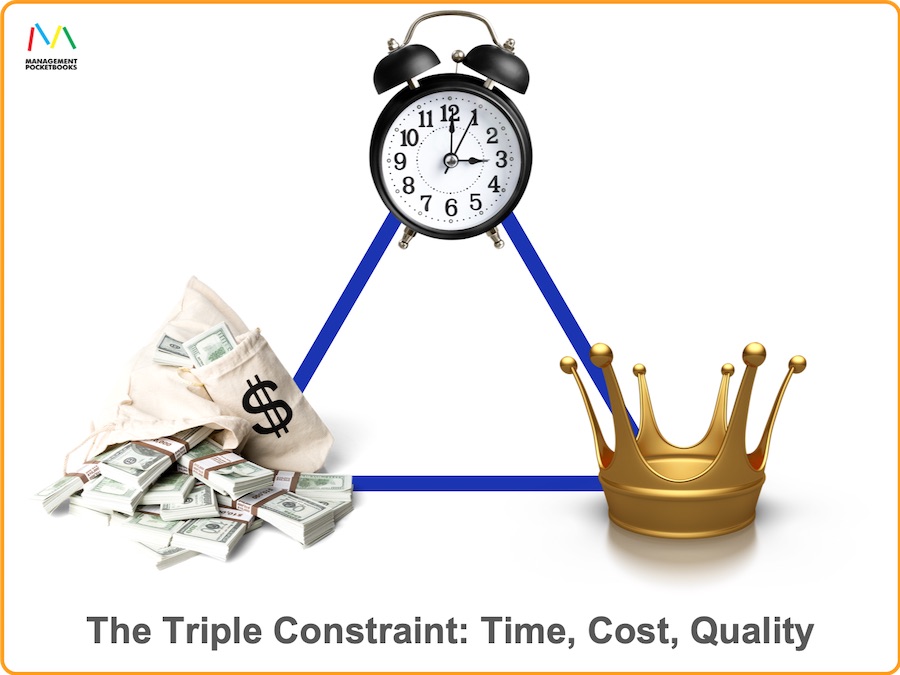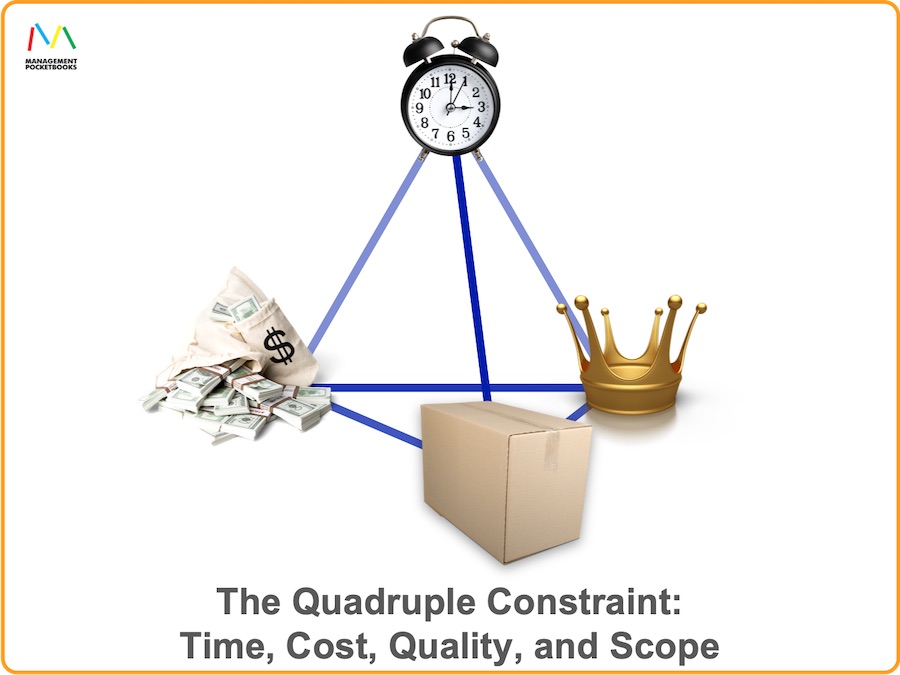
 Time, cost, or quality. Choose one. They are the corners of the triple constraint. And this is the most basic, most important idea within Project Management.
Time, cost, or quality. Choose one. They are the corners of the triple constraint. And this is the most basic, most important idea within Project Management.
Project Management itself is a Big Idea that we have already covered. But when you are leading a project, the triple constraint is your guiding compass. It gives you the bearing for every decision you need to make.
Why is there a Triple Constraint?
You know what you want. And you know when you want it. So how much will it cost?
Bring the engineers and the accountants together, and they can calculate a budget for delivering your project to a specification and a schedule. And, when they do, they will bring time, cost, and quality into balance: the triangle of balance.
More…
But now, what if you, your boss, your client, or your project sponsor want more?
What if they want you to deliver to a higher quality standard?
Well, that’s fine, as long as they pay extra or are prepared to wait longer.
What if they want you to deliver it sooner?
Again, that’s fine… As long as they are prepared to pay more, or accept that you’ll need to cut corners.
Or what if they want you to reduce the cost?
You can do that. But you’ll certainly need to reduce the quality, and you may need to take longer in doing it.
That’s what the Triple constraint is all about
Once you have set the triangle of time, cost, and quality into balance, the three corners constrain one another. You cannot get something for nothing. Hence the common saying:
Time, cost, or quality… Pick two
What is the Triple Constraint?
The triple constraint is usually represented as a triangle, with time, cost, and quality on the three sides. Sometimes (more commonly in America), the sides are time, cost, and scope, and project managers refer to it as the ‘Iron Triangle’.

The three constraints are all interdependent. You cannot alter one, without affecting one or both of the other two. For example, if you improve the quality standard of a project, it is likely to take longer or cost more… or both. Setting an earlier deadline will almost certainly either need more money or reduced quality.
Scope or Quality?
This is a transatlantic thing. Here in the UK, we use quality. In North America, project managers use scope. Scope is the breadth and depth of your ambition. It’s about how much you want to produce, whereas quality is about the standard to which you produce it.
The Truth is, there are Four Constraints
A ‘tetrahedron of balance’. Not catchy. Not easy to say. And nor is the ‘quadruple constraint’. But, of course, scope is your ‘get out of jail (not for free)’ card.
Because if you want to pay less, deliver sooner, and get a higher quality, there is a solution: Aim to do less.

Faster, Better, Cheaper
That is how NASA could credibly launch an exploration program in the early 1990s called ‘Faster, Better, Cheaper’. It was not that they did not understand Project management and the Triple Constraint. They did. But they also understood that there were four, not three, constraining elements. By setting their sights on simpler missions, they were able to launch 16 missions more quickly than ever before, to high design standards, and for less cost.
Sadly, some corners were also cut and some mistakes were made. Of the 16 missions, five failed and one was cancelled. But we do need to remember that the 10 successful missions produced a lot of hard science results. NASA did beat the triple constraint. Across the whole program, it achieved more scientific research papers per dollar spent than for any other program before or since.
How to Use the Triple Constraint
At the start of your project, sit down with your boss, your sponsor, or your client. Explain the triple constraint, and draw them a triangle. Then, give them a pen, and ask them to draw a cross. Get them to place the cross to represent the balance of their priorities.
For example, they could draw the cross:
- At one corner,
meaning that parameter is an absolute priority to them. - Near one corner,
meaning your first priority is to protect that parameter - Along one side,
meaning that the other parameter is the one they will be most happy to see drift - At the centre,
meaning they have no priority. Each parameter is of equal priority and you will need to come to them for every decision
That cross will give you the compass bearing for every decision you need to make on your project. It’s the second most valuable piece of project knowledge, after clarity of the project goal.
Is the Triple Constraint Going Out of Fashion?
It is with some project managers, for two reasons.
‘Traditional’ Project Managers
Some of the more traditional project managers who like to plan their projects are abandoning talk of the triple constraint. It ignores other key project parameters, like risk, benefit, and resources. I’d argue that:
- risk is not a constraint
- resources are represented by cost: cash is the universal resource that can pay for people, equipment, assets, and materials
- benefit is a convenient measure of the outcome from an amalgam of quality and scope
‘Agile’ Project Managers
More credibly, Agile Project Managers prefer the flexibility to make time, cost, quality, and scope at each iteration of their project, rather than once, at the start. This gives greater flexibility to an emergent project where, at the outset, there is too little knowledge to properly make the choice. It does not invalidate the concept of the triple constraint. Rather, it works around it, by refusing to allow one factor to constrain the whole project, from day 1.
What is Your experience of the Triple Constraint?
We’d love to hear your experiences, ideas, and questions. Please leave them in the comments below.
To learn more…
The Project Management Pocketbook is full of tips, techniques, and tools for efficient and effective task management.
